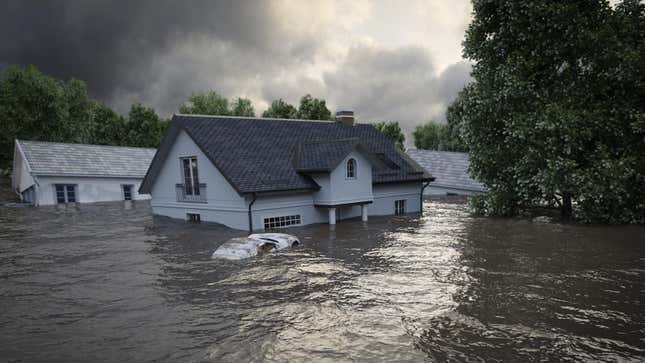These Interactive Tools Reveal Your Home’s Future Flood, Heat, and Wind Risk
Floods are the most expensive natural disaster in the United States, costing over $1 trillion since 1980 (when you take inflation into account), according to Flood Defenders. And while many people use FEMA flood maps to check whether their...


Photo: 2M media (Shutterstock)
Floods are the most expensive natural disaster in the United States, costing over $1 trillion since 1980 (when you take inflation into account), according to Flood Defenders. And while many people use FEMA flood maps to check whether their home has a high flood risk, they are outdated by a decade, according to Scientific American, and they don’t take sea-level rise into account. That’s arguably the biggest flood risk most coastal areas in the United States will face in the coming years. There are organizations that have stepped in where FEMA faltered, though.
The following three organizations use advanced technology and models to estimate the risk most homes have of flooding by taking climate change and sea-level rise into account. They’ve created free and user-friendly tools with the latest data to help you make informed decisions regarding your home’s risk, where to build or invest, how to prepare for future flooding, and how to adapt to the impacts of a changing climate. You just have to plug in an address, county, city, or state to see how likely it is to experience flooding and other environmental risks.
Surging Seas Risk Finder
Surging Seas Risk Finder is a tool created by Climate Central to look a bit more at a macro level instead of a micro level. It shows only coastal areas, but you get more than just a map with projections. You can see data and reports about how sea-level rise and floods will affect populations, buildings, land, contamination sites in the area, and infrastructure during storms and high tides.
You just have to type the coastal area you want to look into the search bar, either by zip code, county, city, or state. A nice feature is the water level tool on the left that you can move up and down to see how different scenarios of sea-level rise will impact that region.
Risk Finder uses the latest sea-level rise projections from the Intergovernmental Panel on Climate Change (IPCC) and other scientific sources. The maps take into account factors like melting ice sheets and glaciers, ocean warming, and changes in ocean currents. It also takes into account coastal topography, storm surge, and tidal patterns to give you more accurate predictions.
G/O Media may get a commission
Risk Factor
Risk factor goes a bit further than showing you flood risks on your property. It also gives you information on wildfire, heat, and wind risk. Flood Factor is Risk Factor’s flood tool. You should be able to find any property in the U.S. and get a detailed assessment on past, present, and future environmental risks and solutions to mitigate them.
Once you type a specific address on the search bar, you will get a rating out of 10, with one being the lowest risk, from each of the four environmental risks for your property. You can click on each of them for a more detailed report.
If you want to go even deeper, you can make an account to get more information about the cause of the risk, and estimate damage cost and downtime for the repair.
You can read more information about Risk Factor here.
ClimateChecke
Climate Check is a data analytics company that provides climate risk intelligence to help insurance companies, real estate developers, government agencies, and you, understand and manage the potential impacts of climate change on specific properties, cities, and states. And they also give you more than just flood risk: they also analyze heat, precipitation, drought, and fire in their report. Climate Check does not provide you with an interactive map, but you can email a detailed report to yourself that you can download for free. That report will have maps that show your risk for five extreme environmental events. Climate Check analyzes the severity of each extreme event, in the past and through 2050, and provides a 1-100 rating that determines how at risk the area is.
It’s important to note that these interactive tools are not intended to provide a definitive prediction of flooding or sea-level rise in a particular area. Rather, they are a tool that can help you understand the potential risks and impacts of sea-level rise and flooding and make to make more informed decisions and help you prepare.

 Konoly
Konoly 































